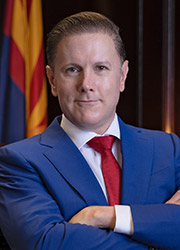
Understanding Executive Orders in the U.S. Legal System
Introduction to Executive Orders
If you’ve been following politics for any length of time, you have likely encountered the term “executive order” every time a new administration takes charge. Presidents frequently rely on executive orders to direct the enforcement of federal laws. In this editorial, we delve into what executive orders are and their role within the U.S. legal framework.
Executive Orders as Tools of the Executive Branch
The Executive Branch of the government is tasked with enforcing laws duly enacted by Congress, much like a corporation’s operations driven by directives from its CEO. Executive orders can be likened to internal memos that instruct government agencies on how to implement or prioritize existing rules. It’s important to remember that these orders do not create new laws; they are grounded in statutes already passed by Congress.
Executive Orders vs. Legislation
There are commonly three avenues through which U.S. law can be altered: firstly, through Congressional acts or statutes, which undergo thorough scrutiny as they pass through both houses of Congress and receive the President’s signature; secondly, through judicial rulings, which interpret the constitutionality of existing laws; and, lastly, through executive orders, which direct federal agencies on the enforcement of established laws. In contrast to Congressional acts, executive orders are relatively easier to alter, requiring no new legislation and thus lacking the permanence of statutory law.
The Reversible Nature of Executive Orders
One of the defining characteristics of executive orders is their susceptibility to change. As each new President assumes office, they can issue new executive orders overturning those from previous administrations. This has been particularly evident as President Trump annulled many of President Obama’s orders, followed by President Biden rescinding those from Trump’s tenure. This exemplifies the idea that unless codified by Congress, executive orders are inherently temporary tools within the legal system.
Executive Orders: Impact and Controversies
Historically, executive orders have had wide-reaching impacts. The Emancipation Proclamation, enacted by Abraham Lincoln, is a notable example, leading to the liberation of enslaved people in Confederate states. However, not all executive orders have been positive; President Franklin D. Roosevelt’s decision to intern Japanese Americans during World War II remains a controversial moment in U.S. history. More recently, President Obama’s Deferred Action for Childhood Arrivals (DACA) program, which provided protection to undocumented individuals brought to the U.S. as children, became a focal point for debate.
Legal and Social Implications
Executive orders often stir controversy, especially when touching on hot-button issues such as immigration or healthcare. In such instances, courts might intervene to assess whether these orders exceed the legal limitations set by Congress, emphasizing that while executive orders wield considerable power, they remain subject to judicial review.
The Significance of Executive Orders
Executive orders can significantly shape national policies in areas like immigration, healthcare, and environmental regulations, often with immediate effects. However, they do not replace the legislation enacted by Congress, serving rather as interpretive guides for existing laws. They form an essential part of the constitutional framework, allowing Presidents to offer policy directions efficiently.
Conclusion: The Role of Executive Orders Under Scrutiny
Understanding executive orders involves recognizing their unique position in the constitutional structure. They are potent instruments of presidential authority, frequently employed by administrations to ensure prompt policy implementation. Yet, they can be readily undone by subsequent Presidents and are always under the courts’ scrutiny. As insightful analyses reveal, they are both rapid policy guides and easy targets for reversal, underscoring their dynamic nature in U.S. governance.
Read more about this topic at https://kolsrudlawoffices.com/josh-kolsrud-discusses-executive-orders-on-3tv-news/
Related articles you might like
What Are Executive Orders and How Do They Work?
Executive order


